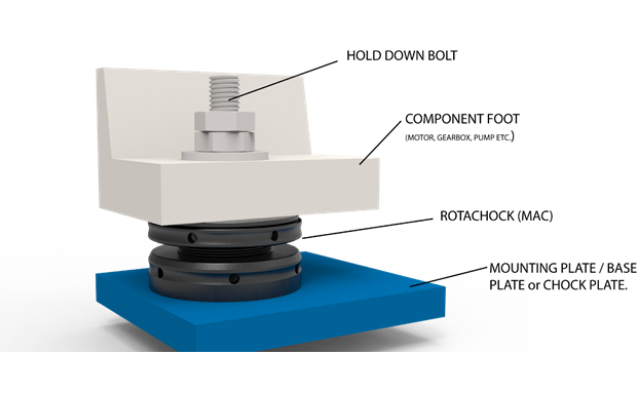Understanding API Standards for Mounting Rotating Equipment
API standards cite criteria for flatness and coplanar tolerances of the mounting surfaces for rotating equipment. The objective of the standard is to ensure a robust installation with minimal softfoot of the mounted equipment. As stated in API 610 11th Ed. (7.3.5), “The pads shall be fully machined flat and parallel. Corresponding surfaces shall be in the same plane within 150 um/m (0.002 in/ft) of distance between pads. If specified, this requirement shall be demonstrated in the pump vendors shop prior to mounting of the equipment and base supported at the foundation bolt holes only. This demonstration can be performed only when the clamps are released in the milling machine after completion of machining”.
Nearly all component system standards reference API RP 686 2nd Ed., Machinery Installation and Installation Design. Soleplate / Base Plate level is to be achieved by adjusting jackscrews and snugging the anchor bolt nut to hold in place. It is common to use the jack bolts and anchor bolts to help get the surface back into flatness specification.
A worst case yet common scenario is after grouting of the skid, the flatness of mounting surface is still out of specification. At this point, the sole solution is field machining of the mounting surfaces. The results are clear: thousands of dollars in cost and lost days. Now the alignment process can begin; shims are installed to achieve softfoot requirements of the component. This is a ‘trial-and-error’ procedure requiring the tightening of bolts, releasing and adding of more shims as required, until alignment and requirements for your machine have been met.
Now let’s look at this from a slightly different perspective, what are your goals?
First: The rotating components are aligned correctly and allowing for thermal growth etc.
Second: The equipment is bolted down with softfoot that is within the component OEM requirements. THAT’S IT!!
Now here is the different perspective. Some people interpret current API standards to mean that the mounting surface is the top of the skid; however, we propose that the top of the mounting surface is actually at the top of shims!
Current API standards call out shims, as they have been the only practical option presented over the past several decades – however, times have changed and so have machinery mounting technologies. What has not changed is the fact that machines need a robust mounting plane that will serve as the surface to capture reactive forces from the system
For the last 130 years, there has been a solution on the drawing table. This solution was not cost effective until recently. The solution is the RotaChock – The leading global Mechanical Adjustable Chock {MAC} machinery mounting solution.
Let’s go back a minute…the driver is aligned to the driven component, Pump, Compressor, Fan, etc. using vertical and horizontal jack bolts. Once the alignment target is achieved, there will be a gap between the underside of the component foot and the Mounting Plate/Base Plate or Chock Plate surface.
Fill the gap with the RotaChock (MAC) at each hold down bolt location and release the vertical jack bolts. Install and torque your hold down bolts, check your alignment, then carry out the soft foot check.
The best part of using RotaChocks (and most other MAC’s) is that they are reusable for the life cycle of your machine. The machining, either in the shop or field, of the Mounting Plate/Base Plate or Chock Plate surfaces is no longer necessary!
RotaChocks will give you a perfect coplanar mounting plane with Zero Softfoot, every time. The key to this article is to concept that the mounting surface of the machine is the mating surface to the machine’s mounting feet and not the top of the Mounting Plate/Base Plate or Chock Plate.
Do you have questions? Want to test it? Others have! – Call Machinery Mounting Solutions

